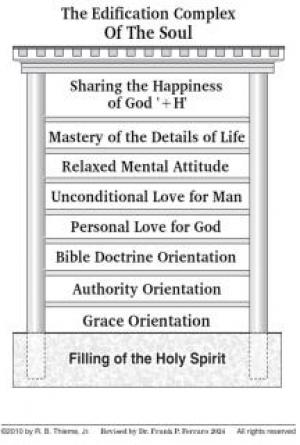Notes:
1 - See appendix I
2 - Bhagavad-Gita, the most important Hindu scripture. It is considered one of the most important religious texts in the world. The term Bhagavad-Gita means Bhagawan´s song (Bhagawan, God, who has [all]opulence). Often the Bhagawad-Gita is simply called Gita (Gi-tá-). Although the Sanskrit noun is feminine Gita ("Song"), in Spanish it is often translated as masculine can be viewed many times as male ("el canto" instead of "la canción"), and the stress can also change (from gi:´t?a to ´gi:t?a:). It is part of the epic text Mahabharata (possibly from the third century BC.) and consists of 700 verses. It contains a conversation between Krishna-whom the Hindus consider an incarnation of Vishnu (while krisnaístas consider it the origin of Vishnu), or as the main personality of God- and his cousin and friend Arjuna on the battlefield in the moments before the start of the Kurukshetra war. In response to the confusion and moral dilemma of Arjuna, Krishna explains to him all the mysteries of spirituality. During his speech, Krishna reveals his identity as the "God himself" (suaiam Bhagawan), blessing Arjuna with an impressive view of his divine universal form among other teachings.
3 - Although much of Buddhism denies that their doctrine has its essence in the Bhagavad Gita, and therefore in Hinduism, it is undeniable that Buddha's teachings are based on or are the same as those of Hinduism: dharma (right action) and the end of samsara (cycle of birth) to attain nirvana (enlightenment).
4 - Vedas (literally "knowledge" in Sanskrit) are four ancient texts, the basis of Vedic religion, which was prior to the Hindu religion. The Sanskrit word Veda comes from an Indo-European term (Weid), related to the vision, is the root of the Latin words vedere (see) and Veritas (truth) and the Spanish words "ver" (see) and “verdad” (truth). The Vedic texts were developed into what is called the Vedic culture, based on castes (varna or 'color') and ashrams (religious life stages).
5 - Supernova: Star that explodes and throws around most of its mass to high speeds. After this explosive phenomenon there may be two outcomes: either the star is completely destroyed, or its central core remains, which in turn collapses by itself giving life to a very massive object such as a neutron star or a Black Hole.
The phenomenon of the explosion of a supernova is similar to the explosion of a Nova, but with the essential difference that in the first case the energies involved are a million times stronger. When a catastrophic event like this happens, astronomers observe a star igniting in the sky that can reach apparent magnitudes of -6m or more.
The explosion of a supernova is a relatively rare phenomenon. We have testimonies of such events: in 1054, a star in the constellation Taurus ignited, the remains of which can still be seen in the form of the beautiful Crab Nebula; in 1572, the great astronomer Tycho Brahe observed a supernova shining in the constellation Cassiopeia, in 1640, a similar phenomenon was observed by Kepler. These are all appearances of supernovae that exploded in our Galaxy.
Today it is estimated that each galaxy produces, on average, a supernova every six centuries. A famous supernova of an external galaxy is Andromeda, appeared in 1885.
6 - Pangaea (Vaalbara-Pangaea): from the Greek prefix "pan" meaning "all" and the Greek word "gea", "soil" or "earth". Thus, it would be a word that means "the whole earth."
Pangaea is the result of the evolution of the first continent Vaalbara, which was probably formed about 4 billion years ago. Pangaea splits some 208 million years ago into Laurasia and Gondwana. At present fragments of this ancient continent are part of Africa, Australia, India and Madagascar.
Chronology
Minor or partial supercontinents:
-Nena (supercontinent, it emerges about 1,8 billion years).
-Atlantica (supercontinent, it emerges about 1,8 billion years).
-Gondwana (it emerges about 200 million years ago).
-Laurasia (Along with Gondwana, Laurasia emerged about 200 million years ago).
-Eurasia (the supercontinent Eurasia is now made up of Europe and Asia).
Major supercontinents:
-Vaalbara (it emerges about 4 billion years ago).
-Ur (supercontinent, it emerges about 3 billion years ago).
-Kenorland (it emerges about 2,5 billion years ago).
-Columbia (supercontinent, it emerges about 1,8 billion years ago).
-Rodinia (it emerges about 1,1 billion years ago).
-Pannotia (it emerges about 600 million years ago).
-Pangaea (it emerges about 300 million years ago).
7 - Genesis. The Greek name comes from the contents of the book: the origin of the world, mankind and the Jewish people, the genealogy of all mankind from the beginning of time. Also "Genesis" has the sense of "prologue" as Jewish history properly begins with the Exodus, which Genesis is merely a prelude. This title appears in the Septuagint or Greek Septuagint (LXX). In Hebrew, the book is called "Bere?šyt": "In the Beginning, from the first word in the opening sentence. The text used for analysis belongs to The Jerusalem Bible, Editions du Cerf, Paris, 1973.
8 - The mass extinction of the Cretaceous-Tertiary was a period of mass extinction of species about 65 million years ago. It corresponds to the end of the Cretaceous period and the beginning of the Tertiary period. It is also known as mass extinction of K/T (German Kreide / Tertiär Grenze), to mark the boundary between the Cretaceous-Tertiary.
No one knows the exact duration of this event. About 50% of biological gender disappeared, including most of the dinosaurs. Many explanations have been proposed for this phenomenon; the most widely accepted is that it was the result of an asteroid impact on Earth from space.
9 - Full text in APENDIX I.
10 - Rivas, Luis Heriberto, Los libros y la historia de la Biblia. Introducción a las Sagradas Escrituras. Editorial San Benito. 2008.
11 – Idem.
12 - In some translations instead of "woman" it says Varona ['ishshah]: "And Adam said: This is now bone of my bones and flesh of my flesh: this shall be called Woman [' ishshah], because of the man ['ish] it was taken. This is now bone of my bones "(Genesis 2: 23).
Adam, recognizing in her the desired partner, joyfully welcomed her as his bride and expressed his joy in a poetic exclamation. The words "this is now" reflect his pleasant surprise when he saw in the woman the fulfillment of his heart's desire.
The triple repetition of "this" (as it is in Hebrew) vividly points to her as whom he was now admiring -with joyous amazement- with the intense excitement of first love.
Instinctively, or as a result of divine instruction, he recognized in her a part of his own being. Thereafter he should love her as his own body as by loving her he loves himself.
The Apostle Paul emphasizes this truth: "So husbands ought to love their wives as their own bodies. He who loves his wife loves himself "(Ephesians 5: 28).
13 - Lao-tse, also called Lao Tzu, Lao Zi, Laozi or Laocio, pinyin: the (ozi (literally 'Old Master'.) is a figure whose historical existence is debated; he is one of the most important philosophers of Chinese civilization. Chinese tradition states that he lived in the sixth century BC., but many modern scholars argue that he may have lived in about the fourth century BC.
14 - Tao is a metaphysical concept originating from Taoism, but also widely used in Confucianism and Chan Buddhism (Zen in Japanese) and in the Chinese religion and philosophy. The word itself can be translated literally as the way, the path, or the route; or as the method or doctrine as well. In Taoism it refers to the primordial essence or fundamental aspect of the universe; it is the natural order of existence, which actually cannot be named, in contrast to the countless “nameable” things in which it manifests itself.
15 - Extract from a note of the National Geographic magazine in which Philip Gingerich, one of the researchers who worked in Wadi Al-Hitan, Egypt, known as the valley of the whales, is interviewed. I found it interesting that he referred to them as "ferocious sea monsters."
16 - Extract from an article published by Fernando Cohnen (16/12/2007) on discoveries made in Gobekli Tepe, Turkey.







